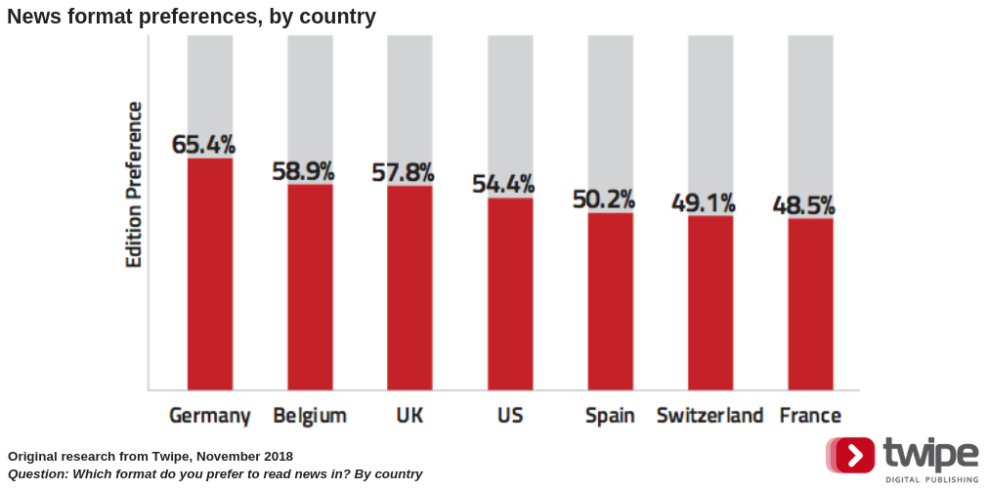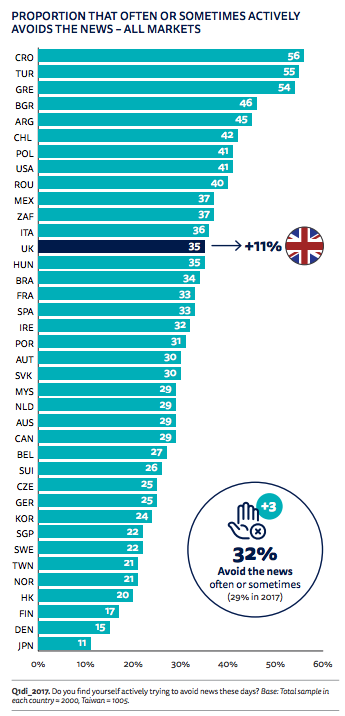Blog
Who are edition readers?
At Twipe, we have long been believers in the power of editions. On our own platform, we see steady yearly growth on editions and that edition readers are more loyal and engaged for longer than other readers. The most common form of edition in the digital age today is the ePaper. This is something that is often overlooked by publishers, which is why we’re launching a new series called “ePaper in the Spotlight” where we will highlight best practices, provide tips and tricks for growth, and address common concerns we hear.

The edition concept isn’t anything new, the first newspaper was published in 1605. But how to bring this concept that has been refined and innovated on over 400 years to the digital age is not always clear. In part this is due to a lack of insights into this format, which is why we embarked on the research project “Reinventing Digital Editions” back in 2017. In the first phase we looked at innovative ways publishers are bringing the edition concept to digital. Then in the second phase we examined the readers of these edition products themselves.
Today we’re digging into this segment of readers who prefer to consume news in the edition format rather than the newsflow format most commonly found on the web today. We’ve defined the two news formats as follows:
- Edition: a daily bundled package of content, with a clear beginning and end
- Newsflow: a continuously updated stream of information throughout the day
It’s important to note first though that this segment of readers who would prefer to consume news in the edition format is actually quite large, representing roughly half of all readers across various countries and age groups.

The findings below come from our report “Reinventing Digital Editions: Reader Insights“, which can be downloaded here.
Edition readers are more loyal and engaged
While both newsflow and edition readers are most likely to consume news from two to five brands per week, editions readers are almost twice as likely to read just one news brand in a week. This is an interesting similarity to the recent conclusion from Reuters that digital news subscribers are overwhelmingly only willing to pay for one news source. It’s a good sign for publishers that they might have more of a chance of becoming this one paid-for news source in their readers’ lives if they focus on their edition products.
We also see that edition readers engage with the news content for longer than newsflow readers. While newsflow readers on average spend five to ten minutes reading news in a session, edition readers on average spend 10-30 minutes.
In this age of an ever increasing competition for attention time, publishers cannot afford to overlook readers who are reliably spending 30 minutes with their content. We also know that it is this daily habit of consuming news that is the most important in the retention of subscribers, so readers who build their news consumption into part of a daily ritual are more valuable in the longterm as well. This importance of habit formation is something we will explore further at the Digital Growth Summit, where we are gathering our community of media innovators to explore the important questions facing our industry today.
Edition readers value editorial selection
Edition readers are twice as likely to prefer to be briefed once a day on an overview of news. On the other hand, newsflow readers mostly fall in the segment of what Reuters calls “news lovers” and as such are twice as likely to prefer to check the news more than ten times a day.
While most of us in the news industry are news lovers ourselves, this isn’t representative of the average population. We’re seeing more and more readers actively try to avoid the news today — recent research shows a global increase of 3 percentage points since 2017, but it’s even higher in some countries such as in the UK which jumped 11 percentage points.

That’s part of what makes editions so valuable, they provide an alternative to the constant stream of information today while still allowing readers to feel on top of the news. It is the act of editorial selection that is so valuable for readers. Someone who has seen the stories of the day has taken the time to curate the important news and placed them in a carefully thought out order.
Edition readers are more valuable for publishers
Increasing reader revenues is the main concern of most publishers this year, so edition readers are a great segment to explore. Editions readers are more valuable for publishers because they are less likely to seek out free news online. Furthermore, edition readers are the ones you have already built direct relationships with and who will seek your content directly, helping to make publishers more independent from platforms. This is becoming more and more important, as we also saw last night with Facebook’s widespread outage.
Many studies have shown that the number one reason people do not pay for news online is the abundance of free content they can already access. To convince someone to pay for news requires it to be exponentially better than the free alternative, not just slightly. However the free news available today is often in the newsflow format: single stories on a website. There is limited free news in the edition format, and even editions that allow sampling of the content do not usually offer the whole edition for free. That’s one reason why edition readers are less likely to feel there is adequate free news online.
ePaper in the spotlight
This finding that edition readers are more loyal and more valuable for publishers means it is worth re-investing in your edition products. In this new series at Twipe “ePaper in the Spotlight”, we will continue to explore how publishers can best utilise the ePaper. Do get in touch with us with any questions, comments, or ideas you have for our research.
This article was written by Mary-Katharine Phillips, Media Innovation Analyst at Twipe from 2017 – 2021.
Other Blog Posts

Stay on top of the game
Subscribe to Twipe’s weekly newsletter to receive industry insights, case studies, and event invitations.
"(Required)" indicates required fields

